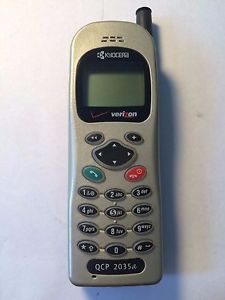WeBoost Drive 4G-X vs SureCall Fusion2Go 2.0
A while ago, I had the opportunity to compare the WeBoost Drive 4G-X vs SureCall Fusion2Go 2.0. We tested the boosters at a remote mountain location and the results really surprised me. Before I get into the, as “Nacho Libre” would say, ‘nitty gritty’ let’s get a little background on the vehicle cell phone booster industry.
Why a Vehicle Cell Phone Signal Booster?
I remember many, many years ago when I was a young broadcast engineer. I was in charge of the upkeep and maintenance on 5 radio stations and 2 television repeater sites. It was my first full-time job out of college, and I barely knew what I was doing. That’s when I learned that college doesn’t give a man skills. It just gives him a little bit of knowledge. The skills come with work, practice and failure. Lots and lots of failure.
One particular time of my great failure is the following story that I am about to share. I once had a transmitter go down. Of course, it was in the middle of the winter, at the most remote location we had. I wasn’t prepared for this outage at all. Surely, I was awoken from a deep, deep slumber where I was probably dreaming about defeating ninjas, or slaying dragons or something else extremely manly. I staggered to my truck and began the trek to Cedar City, the location that housed our “Snow Cat” that I’d have to use to make it to the transmitter site.
It was cold. I hate the cold. As I write this, I am sitting in on my couch in my living room, 10 feet from the roaring fireplace, wearing my Carhartt coat and praying for a speedy end to the winter season. I am warm blooded. I’d take the desert and its blistering, scorching sun ANY DAY over the smallest skiff of snow. Because I HATE the cold. I had been to the location that housed the snow cat before, but never at night. And never in the cold, cold snowy night.
Cell Phones… Can You Ever Count On Them?
In those days, cell phones were not what they are now. Cell phone navigation was just a passing thought. My personal phone was an iPhone, but Apple Maps was terrible back then. It sucked. It had no maps of the area I was headed. The only thing worse than my pathetic, work-issued Kyocera phone was the terrible service that our radio station had traded for advertising.

In those days, cell phone data as we know it now was NOTHING like it is today. I plugged the address where the snow cat was parked into my iPhone and I was on my way. At some point during the hour drive, I lost cell phone service. I was left with an un-downloaded map and after driving around in circles for an hour, wasn’t able to find the darn snow cat. I drove back to where I had service, waited for about 20 minutes while my iPhone (that also had the terrible service) downloaded the rest of the map. It was a disaster.
When I finally found the snow cat, it had snowed so much that I no longer recognized the way to get to the transmitter site. It was a disaster. We ended up being off the air for over a day. It was terrible. Did I mention that it was a disaster?
Enter Vehicle Cell Phone Signal Boosters
In the world of Little Texas and “What Might Have Been” things would have been different. If only a few years later, the radio station might have traded out a cell phone signal booster for my engineering truck (they never bought anything, it was always trade). Then I would have been able to find the stupid snow cat before everything was snowed over beyond my recognition.
My cell phone signal booster would have allowed me to get that map downloaded. I would have kept my cell phone service and I would have been a hero to the teeny boppers waiting to hear Sean Paul‘s terrible music while getting ready for school in the morning.
In all honesty, vehicle cell phone signal boosters are absolutely amazing. They work great and they can keep you connected in those troublesome fringe areas where service tends to be as reliable as the work for Glynn Wolfe‘s wedding planner.
The Comparison

When I worked as an engineer at Wilson Electronics (now WeBoost) I was pretty skilled at fixing the “Mini” vehicle signal booster. I knew that thing backwards and forwards. Inside and out. It was a great cell phone signal booster for vehicles. That was, of course well before the days of 4G. Now things have changed some, and I was a little unsure of how the flagship SureCall vehicle cell phone booster would stand up to the WeBoost version of the same thing. So I decided to get out my lab coat (you can always trust a guy in a lab coat) and put it to a test.
I installed both of the cell phone signal boosters, in parallel, in a friend’s vehicle. We drove that thing up to the beauty of the Cedar mountains (this time without snow, and in the daylight) and tested them out side by side.
Because cell phone bars readouts are more than a little misleading, I would test the boosters by comparing their actual performance on how they did with helping me make a phone call. I would first turn on one of the boosters, make a test call and then try the other one. Both boosters were installed according to manufacturer’s specifications and tested making a cell phone call to the love of my life. Besides, she had nothing better to do than sit around and wait for my phone calls, right?
The Results
I had a friend video record the results of our tests. I will let the video mostly speak for itself, but I will tell you that the SureCall signal booster FAR outperformed the WeBoost signal booster in my field test.
The first call that I made to my wife with the SureCall signal booster went through immediately. Much faster than I expected, actually. I then tried to make the same call with the WeBoost signal booster, and the first call didn’t go through. I made the call again and I found that the call was only working in one direction. My wife couldn’t hear me, but I could hear her. Strange. And surprising for me because having been on the team making developments to the Wilson Electronics cell phone signal boosters, I thought that they would have definitely been able to outperform the SureCall signal booster.
Conclusions
So, If you are looking for a reliable vehicle cell phone signal booster that will work on the outskirts of a remote area, I would definitely recommend the SureCall Fusion2Go 2.0 cell phone signal booster. In my tests, I found that it easily outperformed the WeBoost Drive 4G-X booster. Which was surprising for me, because I totally didn’t expect it to do better.
If you are looking for the vehicle cell phone signal booster that I tested in this video, you can find it here in my store.
As always, if you have any questions or need help in figuring out which cell phone signal booster is right for your situation, please feel free to drop me an email to [email protected]. I love this stuff and I’m always happy to help out!
Thanks for stopping by!
-Rob

